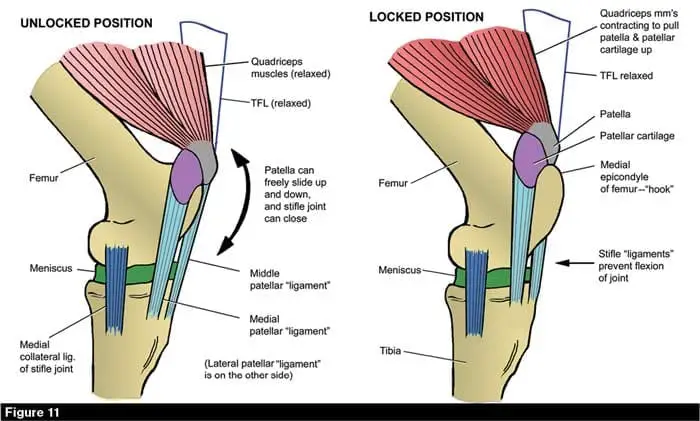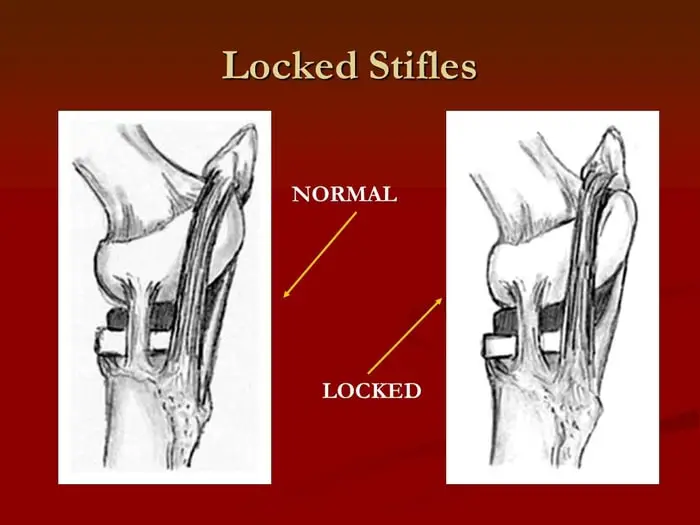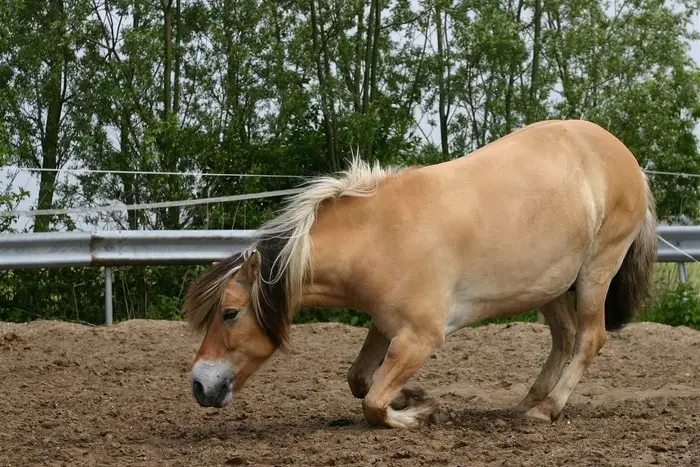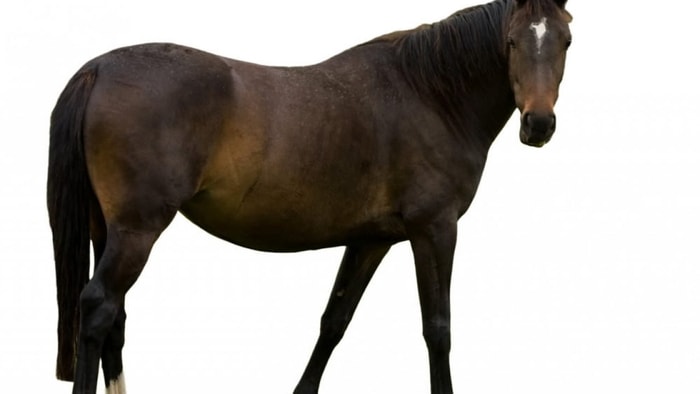This sudden severe lameness can be confused with a broken leg or pus in the foot. It is appropriately known as ‘upward fixation of the patella’ or horse locking stifle. The horse with upward patellar fixation or locking stifle is unsound for riding or work. If your horse has the situation, it may be unsafe to ride and require immediate surgery.
Occurrence of Horse Locking Stifle
The condition mainly occurs in the following groups of horses:
- Young, immature animals that are not in regular work.
- Horses have been taken out of training and confined to a stable, often as a result of illness or injury.
- Some horse breeds, small ponies such as Shetlands.

Causes of Upward Patellar Fixation in Horse
The exact cause of the locked stifle joints is unknown, and the condition is most commonly occurs in foals, ponies, and horses which are not in regular work. Young and growing horses may develop locking stifle due to the fast growth of spurts during bone and muscle development. A small spurt may also change the joint angles of the horse that cause malfunctioning of that joint.

Symptoms of Horse Locking Stifle
The most common clinical signs of fixation of upward patellar bone are:
- A sudden severe lameness, never during exercise, but during box rest or at the start of the movement. It is usually seen as the horse walks out of his stable.
- The affected back leg will point backward and appear unable to bend fully.
- The animal may hop forwards, dragging the toe along the ground with a slightly bent fetlock.
- It may click back to normal after a few strides, or it may persist for longer.
- Mostly it is intermittent, with affected horses moving relatively usually, and then occasionally, the stifle will get caught up for a few strides.
- The equine mechanism for sleeping standing up involves the patella or kneecap catching over the end of the thigh bone.
- Usually, a horse can unlock or free its patella, but occasionally it catches: hence the name.
- The leg may appear stuck at an odd angle, hence the confusion with a fracture.

First Aid Management Fixation of Upward Patella
You check that the leg is stuck backward rather than hanging at an odd angle. The horse or pony is unlikely to be distressed, whereas a fracture is painful. Frequently the patella will free itself after a few strides, and it is often possible to make it unlock by:
- Making the horse move forwards suddenly.
- Making them back.
- Manipulating the stifle.
Immature, unfit, or poorly muscled animals will frequently grow out of this irregularity as they become older and more robust; most are improved by increasing fitness, regular exercise, and reasonable care. If it keeps happening, you consult your veterinarian for surgery as early as possible.

Final Advice on Horse Locking Siffle
Horse locking stifle is an emergency condition that makes the horse unsound suddenly. It is most important to discuss special shoes with your veterinarian and farrier. Individuals vary, but often it helps if the farrier can slightly raise the heels, shorten the toes, and lower the medial wall a fraction more than the lateral one.